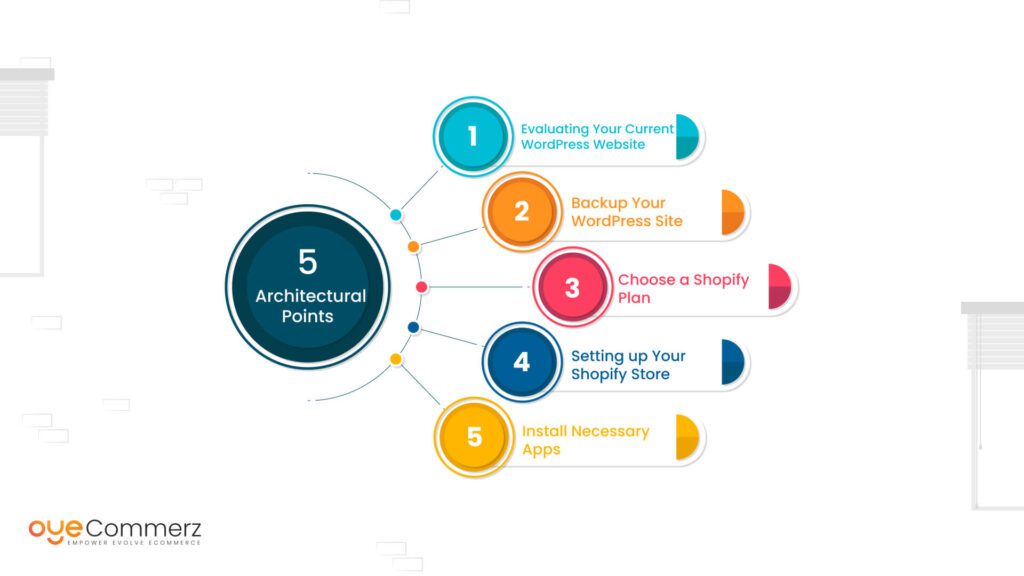Transitioning from WP to Shopify marks an promising step in streamlining your e-commerce processes. As companies grow, selecting a platform that aligns with scalability, UX, and customization becomes crucial. Shopify is widely recognized as a preferred choice for e-commerce professionals, providing unmatched flexibility, data protection, and ease of use. In this guide, we will delve into the transformative impact of this migration, discuss the advantages, and share actionable steps to ensure a seamless transition.
1. Top Reasons to Transition from WordPress to Shopify
The combination of WordPress and WooCommerce, continues to support countless e-commerce platforms. Nevertheless, as companies scale, challenges like reliance on plugins, data risks, and complex setups often obstruct growth. Shopify, designed explicitly for digital retail, eliminates these issues with an all-in-one, user-friendly solution. Real data back this transition—Shopify hosts over 4.4 million stores worldwide, with a documented 10% increase in sales conversion rates for many businesses after migration.
2. Key Benefits of Shopify for E-commerce Success
Shopify’s powerful platform is tailored for expanding businesses. Its notable benefits are:
- Effortless Design Flexibility: Shopify offers over 80 expertly crafted themes.
- Built-in Features: Features like Shopify Payments and built-in SEO save time and effort.
- Global Reach: Multi-currency support and regional customization enable brands to expand internationally.
Additionally, Shopify boasts an uptime rate of 99.98%, guaranteeing your website remains accessible.
3. Preparing for WP to Shopify Migration
Prior to starting the migration process, evaluate your existing setup. Review inventory details, client information, and SEO performance. Resources such as Shopify’s Migration Kit or third-party solutions help ease the transition. Create a detailed strategy, ensuring all resources—product descriptions, images, and articles—are ready for seamless import.
4. The Importance of Accurate Data Migration
Data migration forms the foundation for a smooth platform switch. When migrating from WordPress to Shopify, focus on:
- Product Information: SKU, item summaries, and categories.
- Customer Data: Emails, order history, and custom fields.
- SEO Optimization: Preserve meta tags, URLs, and redirects to avoid SEO losses.
Use tools such as LitExtension to facilitate seamless migration while minimizing errors.
5. Tailoring Your Shopify Store to Fit Your Brand
Post-migration, personalizing your Shopify store helps it aligns with your business identity. Utilize Shopify’s drag-and-drop editor to create layouts with ease. Shopify's themes are mobile-responsive, providing a seamless user experience across platforms—a key point, since 74% of e-commerce traffic Shopify advanced features is generated by mobile visitors.
6. Maintaining SEO During Migration
SEO is vital for preserving your online presence during migration. Shopify excels in SEO with organized link formatting, preloaded features, and seamless blog integration. Ensure:
- Implement 301 redirects for old URLs.
- Enhance updated content with targeted phrases.
- Leverage plugins like Plug in SEO to track analytics post-migration.
7. Essential Tests After Migrating to Shopify
After finishing the transfer, run detailed checks.
Review: - Website speed (Shopify Reliable Shopify migration boasts faster speeds compared to WordPress).
- Payment integration reliability and transaction flow.
- Adaptability across devices.
Testing guarantees your store provides a seamless shopping experience from day one.
8. Case Study of a Successful Migration
One such migration success story is Gymshark, a fitness apparel brand that moved to Shopify. After the switch, the company experienced a 60% boost in mobile sales and significantly lowered site downtime. This showcases the potential of Shopify in enhancing online business success.
9. Challenges and Solutions
Migration is not without obstacles, such as data integrity and reconfiguring custom functionalities. However, Shopify’s extensive assistance and external professionals make overcoming these hurdles manageable. Collaborating with qualified Shopify developers helps guarantee a smooth transition.
10. Starting Your Journey with Shopify
Migrating from WordPress to Shopify represents a forward-thinking approach to online retail. By focusing on growth, simplifying management, and enhancing the customer experience, Shopify empowers businesses to thrive in competitive markets.
Conclusion
Transitioning from WordPress to Shopify is a strategic move that can greatly enhance your e-commerce success. With a well-structured strategy, the right tools, and professional guidance, you can unlock new growth opportunities.
Excited to start the journey? Let’s discuss how our Shopify migration services can transform your e-commerce platform. Get in touch today, or consider: Can your business afford to miss out on Shopify’s growth potential?
